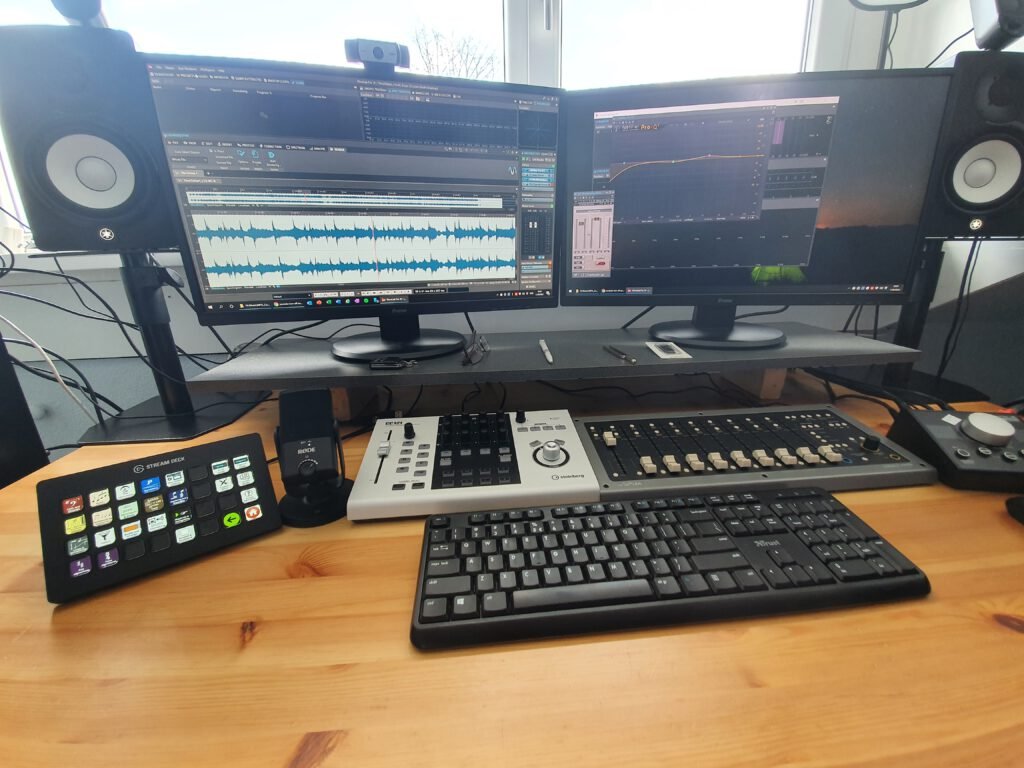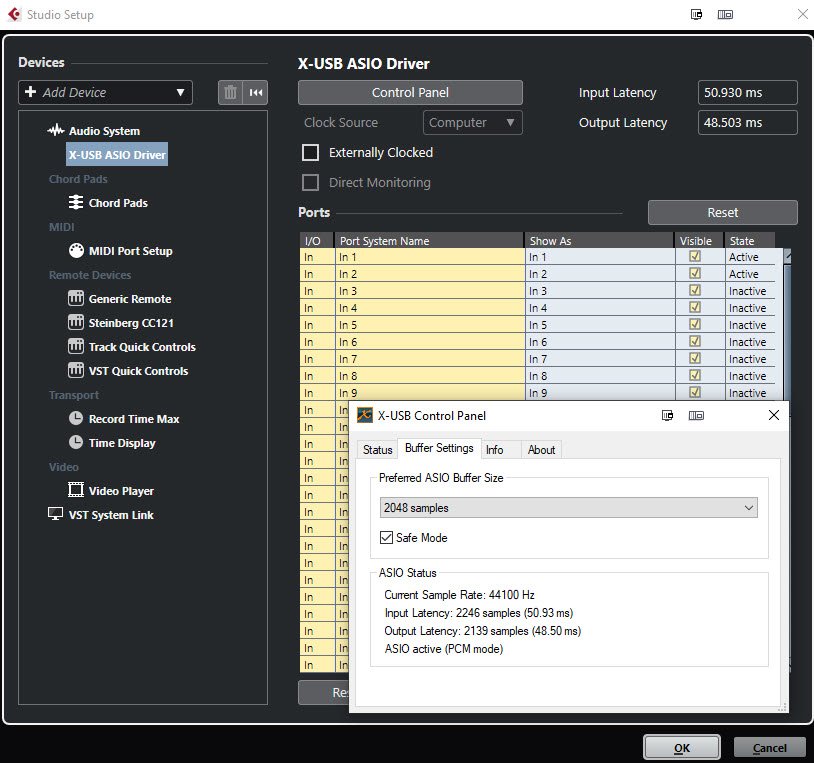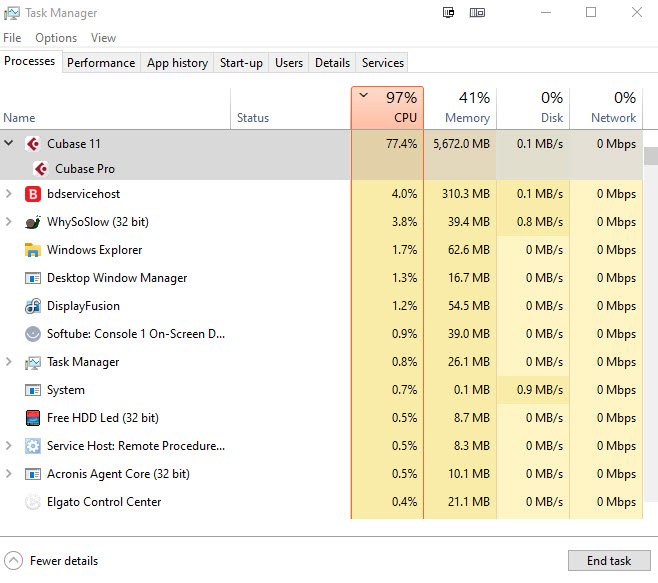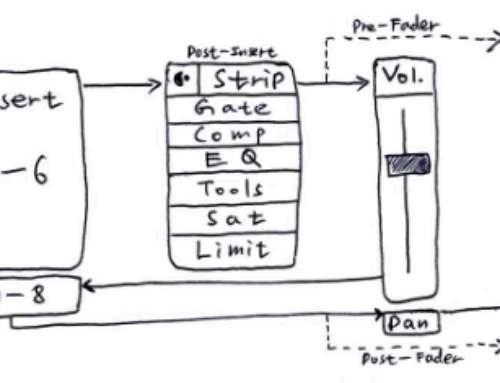| Recent Comments |
| Categories |
| Archives |
| Tags |
Softube Console 1 Fader
See [here] for an update about the Controller setup.
For as long as software mixing (e.g., in Cubase) exist many hardware devices have been constructed and sold to more easily control the hundreds of parameters of a modern DAW, often simultaneously. More importantly, these devices are aiming to get back the feeling of a real mixing console instead of using a mouse and keyboard shortcuts. Consequently, all DAWs supports alternative controllers such as fader surfaces, jog/shuttle wheels, rotary encoder banks and so on.
I use this controller in combination with the SSL UC1, AVID S1, Steinberg CC121, KORG nanoKontrol, MP Midi Controller, nOb, and the Stream Deck XL). It connects to the computer with a USB connector. A review about the Console 1 Fader from SoundOnSound is available [here].
The device
Overview
- Ten touch-sensitive 100 mm Alps motorized faders give premium professional feel and feedback (note that most other DAW controllers (e.g., from Mackie, Behringer, PreSonus, etc) generally have multiple of 8 faders).
- The faders control up to ten channels at once, working volume, high-and-low-cut filter values, drive and drive character (modeled desk saturation), panning, input gain, and send levels.
- Includes two console emulations (Tube and Discrete) for an analog sound. Fader enriches the sound of your tracks in the same ways as a true analog console.
- The three assignable buttons work by default as basic transport controls for Cubase, but each can be assigned to a key command of your choice (e.g. CTRL+Z), for whatever use you can imagine.
- A single encoder offers control of pan per track, but also unlocks a powerful stereo spatialization tool, to widen individual tracks.
- With the ‘Layer Mode’ one can create layers of tracks (i.e., VCAs) to, for example, low cut all guitars at once.
Setup in my studio
Configuration
The trio Console 1 Fader, Steinberg CC121, and the StreamDeck XL is perfect for controlling the Cubase.
Control of different track types. Console 1 Fader (C1F) only controls audio channels, mix/effect busses. It does not control midi or VCA tracks but it does detect these tracks and will assign a fader to it, but it will not control the DAW. This has the advantage that C1F stays consistent with the track order in Cubase. These tracks can, however, be controlled by the CC121. Since C1F and CC121 follow each other there is always a hardware fader to control any track in Cubase (including e.g., the Folder tracks that can be expanded or collapsed with the CC121)
Gain, Low/High cut. The C1F plugin comes with its own gain, low/high cut settings. In the past I would set the gain and low cut from Cubase but C1F makes this so much easier. In particular the gain allows for an easy gain staging to ensure that the initial fader positions are around 0 dB
Eq. The advantage of the CC121 is that it can control the 4-band parametric equalizer of Cubase with 12 knobs and 6 buttons. Again, much easier then using the mouse.
Channel sends. Can be controlled by both controllers but it is much more intuitive on the C1F.
Assignable buttons. The CC121 has 4 assignable buttons while the C1F has 3. Very handy but on my StreamDeck I have an unlimited number of buttons as my disposal.
Channel controls. One big advantage of the CC121 is that is has buttons for the important channel settings such as Solo, Mute, Read/Write, Record, Open instrument, Monitor, and Channel settings.
Channel select and page. On the CC121 I can browse each individual track with the Channel Select buttons. On the C1F I can browse through the channels by sets of 10 (instead of 8 as is done with many other DAW controllers). Here is where the StreamDeck XL comes in! Thanks for GuruGurra on the Cubase forum.
What is the issue? A Cubase project may contain many tracks (for example, my project Time to Start contains about 90 tracks). I always have a specific ordering: vocals, drums, bass, guitar, keyboards, etc. Consequently, if you are mixing the vocals with the C1F and then want to make an adjustment on the keyboards you would have to press the page button multiple times (or select the track with the mouse). I wanted to get rid of this and be able to go to a particular section of my project (e.g., the keyboards) with a single push on the button.
It turns out that this is possible using Generic Remote in Cubase. In the Generic Remote that I have setup for StreamDeck XL I made 10 new Controllers and assigned these to Device=Mixer, Channel/Category=TrackName, Value/Action=Selected. Now it may seem that you have assigned a specific named Cubase track to the controller but underlying Cubase does not use the names but the track number!! Consequently, if you remove or add tracks the controller will still point to the same track number (which will then have a different name). You can also see this in Generic Remote: remove a track and you will see that the name has changed. This even transfers to new/other Cubase projects.
As a final step I have assigned 10 StreamDeck buttons to Cubase track 1, 11, 21, 31 etc. Pressing one of these buttons will directly set both the CC121 and the C1F to the correct Cubase track. Very nice.
The only thing to take care of is that specific sections (e.g., keyboards) start at, for example, 61. This is easily done by adding/removing empty audio dummy tracks at appropriate places in the Cubase project. Thus, have fun.
Here is how it looks like (I have other StreamDeck XL pages with more Cubase commands):
Template C1F
Softube Console 1 Fader Template (pdf) 109.78 KB 108 downloads
See also: DAW DAW Controllers The Perfect DAW Controller ...
Weird problem
My Softube Console 1 Fader was acting very strangely resulting in erratic behavior of the Cubase faders:
I did some extensive testing and diagnosing, but so far I was not able to solve the problem. I suspect the unit is defect. In an attempt to solve the problem I put the Steinberg CC121 and the Console 1 Fader both to a stress test. Unfortunately, it didn’t help:
My diagnosis so far:
- When using Console 1 Fader, my DAW-faders move erratically with about 1db when using the Console 1 Fader. Not always the same faders. Sometimes it stops.
- I sometimes can hear the motors of the Console-Faders due to this erratic behavior. Sometimes they very slightly move.
- I tried 2 USB cables and several (powered) USB 2.0/3.0 ports.
- When I disconnect the Console 1 Fader, the DAW-faders stop showing this behavior.
- The erratic DAW-fader behavior always concerns a fader within the selected page (bank) of 10 faders.
- The DAW-fader only seems to become erratic when set at about -9db. 2db higher or lower and the erratic behavior disappears. Gain doesn’t influence this.
- It doesn’t seem to be a specific Console-Fader that causes this problem. It concerns all faders. Thus not a dirty fader?
- If I grab the erratic DAW-fader with my mouse and try to set it at a different level the Console-fader is not responding. I have to have multiple attempts before being able to move the DAW-fader with my mouse.
- If I bypass the Console 1 plugin then I still have the erratic behavior of the DAW-fader.
- If I make a clean Cubase project with only 80 empty audio tracks and only the Console 1 plugin on each track then I also get the same erratic behavior of the DAW-fader
- I also notice that inserting the Console plugin on about 80 tracks gives an huge (over) load on Cubase audio performance resulting in staggering audio and audio drop out. I can partially fix this by increasing the buffer size of my soundcard (Behringer X32) at the expense of latency.
- I also have controller from Steinberg CC121 that is not causing this problem. The erratic behavior of the DAW-faders also occur when I disconnect the CC121 and only have Console 1 fader attached.
- I use Cubase Pro 11
- I use the Console 1 VST3 plugin
- Computer specs: Windows 10 (latest update), Intel Core i7 @3.5Ghz, 32 Gb ram. See also [here]
- *I also tested in REAPER. Exactly the same problem and behavior.
Update 2 April 2021. I have send back the Console 1 Fader. In return I received a new unit (different serial number), thus I guess that the erratic faders were a hardware problem. I still find the the load on the Cubase Audio Performance is rather high but after playing around with some of the Cubase settings the load is still high but I do not get audio dropouts anymore. A problem that remains is inability to reassign key commands that start with Alt/Ctrl/Shift to the assignable buttons. For both issues I again contacted Softube support.
Update 5 June 2021. I decided to largely abandon Softube Console 1 Fader. Really unfortunate since this is a well thought of device. However, after doing a real mixing session in which I also use other (waves) plugins, the console 1 VST3 plugins cause an extremely high Cubase Audio Performance. See here for the audio performance when using the console 1 plugins. I have to increase the X-USB ASIO buffer size of my Behringer X32 to 2048 to avoid audio drop outs but even then the CPU load (as seen in Windows task manager) is about 100% and slows down the entire (Cubase) system making it impossible to use. This issue is clearly related to the VST3 (not the VST2) plugin since removing those from all my tracks restores Audio Performance to a normal level. Unfortunately, the VST2 plugin doesn’t provide ‘deep integration’ with Cubase. I found out that this performance issue was also reported already in 2015 by Reaper users and there was a lengthy discussion about this problem but clearly never resolved by Softube. See here. In addition, to this performance issue I can still not assign key commands to the assignable buttons and, in addition, they keep resetting to their original assignments. I have contacted Softube several times but they very responsive, and so far couldn’t provide any solution to these problems. To my question if the Audio Performance/VST3 issue is a known problem with Cubase (as it is with Reaper), I never got any response. To my question about refund policies I also never got any reply. If decided to replace the C1F for the Avid S1 that also has a deep integration with EUCON supported DAWs including Cubase. For the time being I will use the C1F only for the main mix buses in my projects. In this way I only have to add a max 10 Console 1 VST3 plugins in the project. But likely I will completely switch over to the Avid S1 in due time.
Current performance with Cubase mix project:
Current settings:
Manuals
Softube Console 1 Fader User Manual (pdf) 2.93 MB 262 downloads
See also: DAW DAW Controllers The Perfect DAW Controller ...
Video












